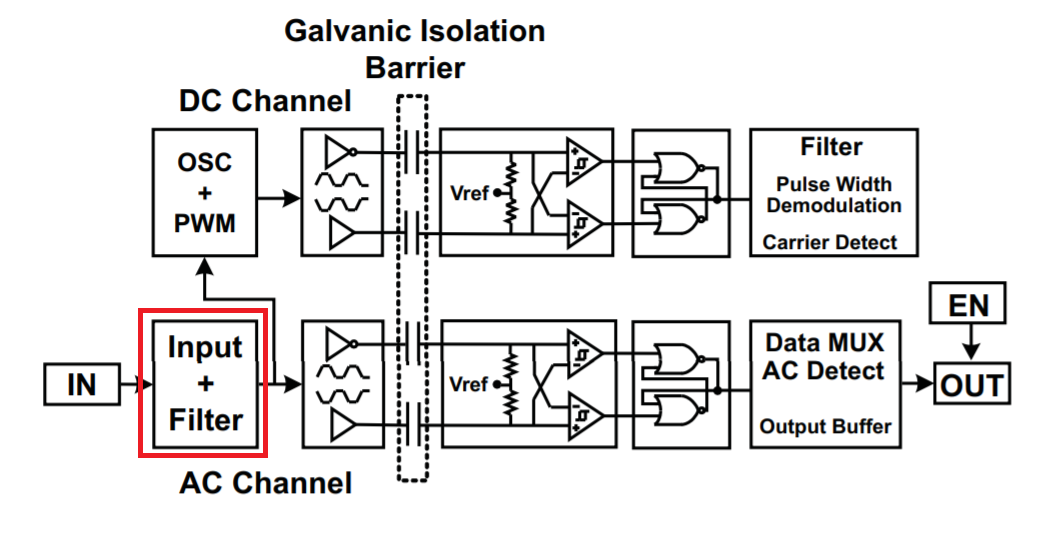Other Parts Discussed in Thread: ISO7742, , ISO7242M, ISO7242C
Dear Technical Support Team,
My configuration is below. When I connect or disconnect the cable, chattering signal from connector reaches FPGA.
input connector→SN75LV4737ADB→ISO7242ADW→FPGA
So FPGA has chattering reduction function. However sometimes FPGA misrecognize with chattering reduction function with because chattering signal can't pass through ISO7242 from V2(5V) to V1(3V).
■Q1
Is it possible to pass chattering signal through ISO7742 ?
Could you see attached waveform about chattering with ISO7242 ?
■Q2
isolator of ADI such as ADuMxxx has refresh functions. Is seems to pass the chattering signal through ISO7242 without change.
Does ISO7742 has a refresh function?
Best regards,
ttd
Best Regards,
ttd




